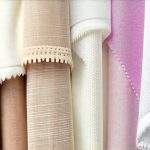Clothing Materials Affecting Bladder Irritation
For many individuals experiencing overactive bladder (OAB) or interstitial cystitis (IC), seemingly unrelated aspects of daily life can significantly impact their symptoms. While dietary changes and stress management are often highlighted, the clothing we wear is frequently overlooked as a potential irritant. The truth is that materials in direct contact with sensitive areas – particularly the pelvic region – can play a surprising role in triggering or exacerbating bladder discomfort. This isn’t merely about tightness restricting movement; it’s about how different fabrics interact with skin, potentially influencing nerve pathways and contributing to inflammation. Understanding this connection empowers individuals to make informed choices about their wardrobe and proactively manage their condition for improved comfort and quality of life.
The underlying reasons clothing materials can impact bladder health are complex and multifaceted. It’s not always a direct cause-and-effect relationship, but rather an interplay between fabric properties, individual sensitivities, and pre-existing conditions. Certain fabrics can trap heat and moisture, creating a breeding ground for bacteria that may lead to irritation or infection. Others might contain dyes or chemical residues from manufacturing processes that trigger allergic reactions or sensitivities in susceptible individuals. Furthermore, the physical texture of some materials – rough or abrasive surfaces – can mechanically irritate delicate pelvic tissues, sending signals to the bladder and contributing to symptoms like urgency or pain. This is why exploring fabric choices isn’t just about comfort; it’s a proactive step toward managing bladder health.
The Role of Synthetic Fabrics
Synthetic fabrics have become ubiquitous in modern clothing due to their affordability, durability, and versatility. However, these same qualities often contribute to bladder irritation for sensitive individuals. Materials like polyester, nylon, rayon (often manufactured with chemical processes), and acrylic are less breathable than natural fibers – meaning they trap heat and moisture against the skin. This creates a humid microclimate ideal for bacterial growth and potential skin inflammation, which can indirectly affect bladder function. The constant friction from these fabrics can also exacerbate irritation in already sensitive areas, particularly for those with IC or OAB.
The manufacturing processes used to create synthetic fibers often involve chemical treatments and dyes that can linger even after washing. These residual chemicals may cause allergic contact dermatitis – a skin rash caused by direct contact with an allergen. Even if a visible rash doesn’t develop, these chemicals can still irritate the underlying tissues and contribute to bladder symptoms. It’s important to note that sensitivity levels vary greatly; what one person tolerates well, another might find intensely irritating. Choosing garments labeled as “organic” or “eco-friendly” when it comes to synthetics may indicate reduced chemical processing, but natural fibers generally remain a safer option for those prone to bladder issues.
Finally, the tight fit often associated with synthetic clothing – think leggings or form-fitting dresses – can further compound the problem. Constriction reduces airflow and increases friction, exacerbating both heat buildup and irritation. While not all synthetic garments are inherently problematic, their lack of breathability, potential for chemical residue, and tendency to be worn tightly make them more likely to contribute to bladder symptoms than natural alternatives.
Natural Fiber Alternatives
Fortunately, a wide array of natural fiber options provide gentler alternatives for individuals seeking bladder-friendly clothing. Cotton is often the first choice due to its breathability, softness, and affordability. However, even cotton can be problematic if it’s heavily dyed or treated with chemicals during manufacturing. Opting for organic cotton – grown without pesticides or synthetic fertilizers – significantly reduces exposure to potential irritants. Similarly, linen, made from flax fibers, is exceptionally breathable and absorbent, making it an excellent choice for warm weather.
Bamboo fabric has gained popularity in recent years due to its sustainable production and soft texture. It’s naturally antibacterial and highly absorbent, helping to keep skin dry and comfortable. Silk, while luxurious, can also be a good option if tolerated; however, some individuals find it too constricting or irritating. The key is to prioritize fabrics that allow for airflow, minimize friction, and are free from harsh chemicals. When selecting natural fibers, pay attention to the weave – looser weaves generally promote better ventilation.
Washing and Care Considerations
Even the most bladder-friendly fabric can become an irritant if not properly cared for. Harsh detergents containing dyes, fragrances, or optical brighteners can leave behind residue that triggers sensitivities. It’s crucial to use fragrance-free, dye-free laundry detergents specifically designed for sensitive skin. Double rinsing garments helps remove any remaining detergent particles. Similarly, fabric softeners should be avoided as they coat fibers with chemicals and reduce their breathability.
- Always wash new clothing before wearing it to remove manufacturing residues.
- Consider using a hypoallergenic laundry booster to further enhance cleaning and minimize irritants.
- Avoid over-drying clothes in the dryer, as excessive heat can damage fibers and potentially lock in chemical residue.
- Line drying is often the gentlest option, allowing for natural airflow and reducing exposure to high temperatures.
Beyond Underwear: Full Wardrobe Assessment
The focus on underwear when discussing bladder irritation is understandable, given its direct contact with sensitive areas. However, it’s essential to consider the entire wardrobe. Pants, skirts, leggings, even dresses can contribute to symptoms if made from irritating materials or worn too tightly. Examine all clothing items that come into close proximity with the pelvic region and assess their potential impact.
Consider layering breathable cotton underwear under tighter-fitting pants to create a protective barrier. Choose loose-fitting garments whenever possible to minimize friction and allow for airflow. Avoid waistbands that dig in or constrict movement. Remember, proactive adjustments across your entire wardrobe can collectively make a significant difference in managing bladder symptoms and enhancing overall comfort. The goal is not to eliminate all synthetic fabrics entirely (that may be impractical), but rather to prioritize natural fibers and mindful choices where they matter most – around the sensitive pelvic area.





















